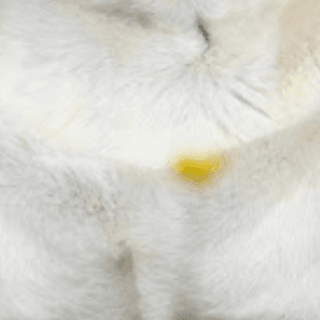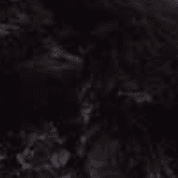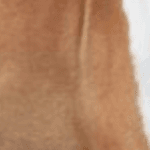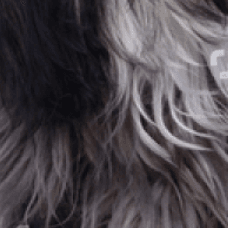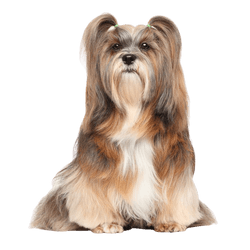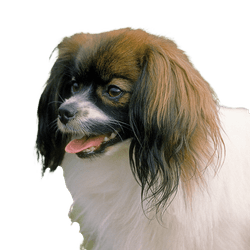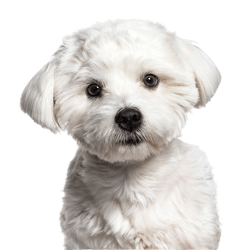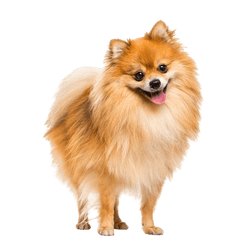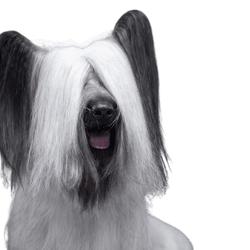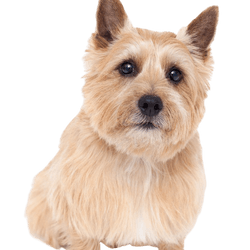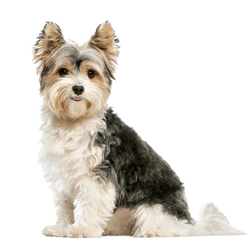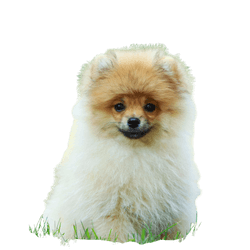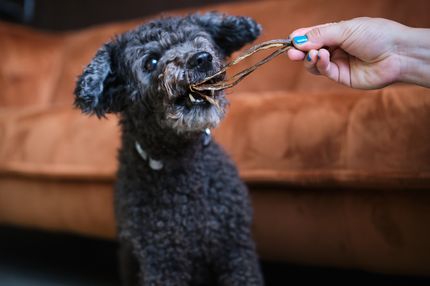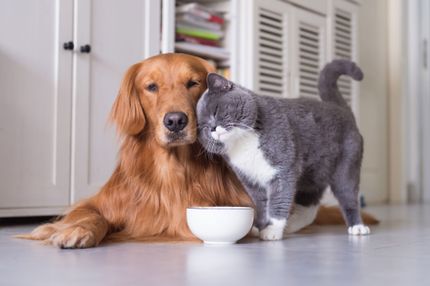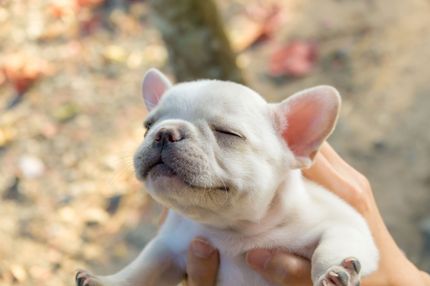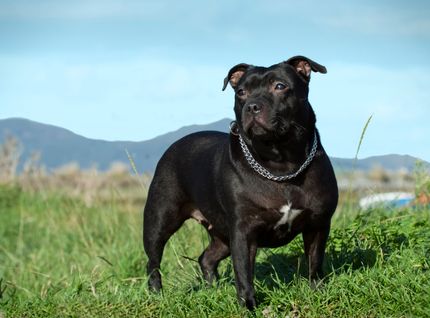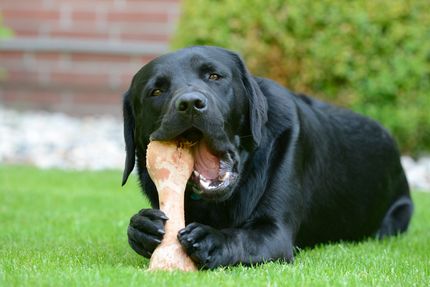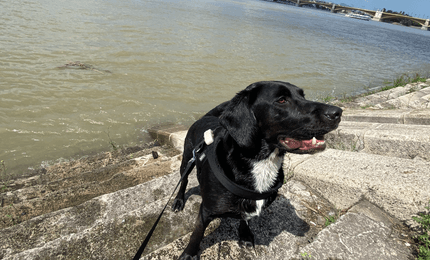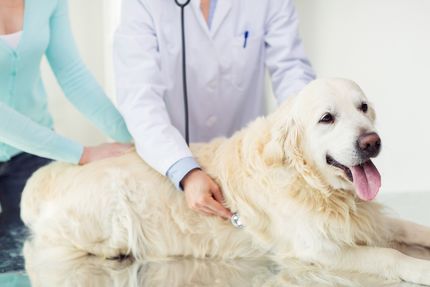Facts & Origin
Origin and history of the Pug
The Pug, also known as the "Pug" and believed to have originated in China, probably has its ancestors in the small palace dogs of the time. It is believed that the "Lo-Sze", which was bred around 1000 AD, is its real ancestor.
It was not until 1500 that the Pug reached Europe through Dutch merchants. According to legend, the breed became the mascot of the Dutch royal house of Orange after a pug saved the Prince of Orange from an attack by Spanish troops by warning him by barking. The breed accompanied William and Mary of Orange when they arrived in England to take over the monarchy, and soon became a rage among the British. The docking of his ears, which was still common before, was forbidden by Queen Victoria, who also bred this breed. For a long time, the little four-legged friend was considered a fashionable dog.
Nevertheless, soon after they lost followers again, so that today they are rather rare. Especially towards the end of the 19th century, interest in the Pug seemed to wane considerably, as the athletic dog developed into a frequently overweight, disease-prone lap dog. In the meantime, however, the breed is experiencing a tremendous upswing again and more attention is being paid to health.
Suitability and keeping
The Pug is classified as a companion dog. He is also well suited for families, seniors and living in the city or apartment.
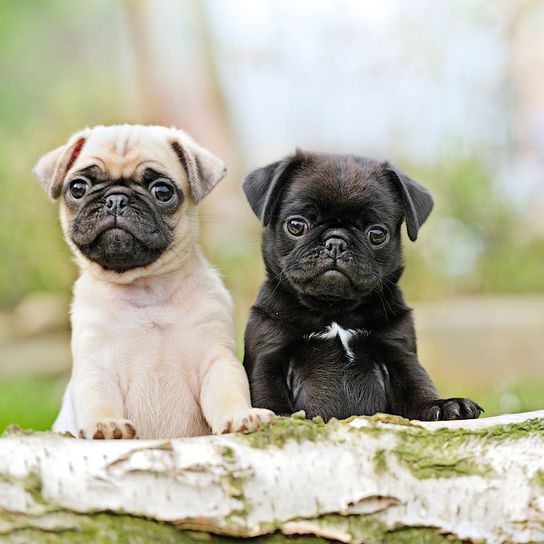
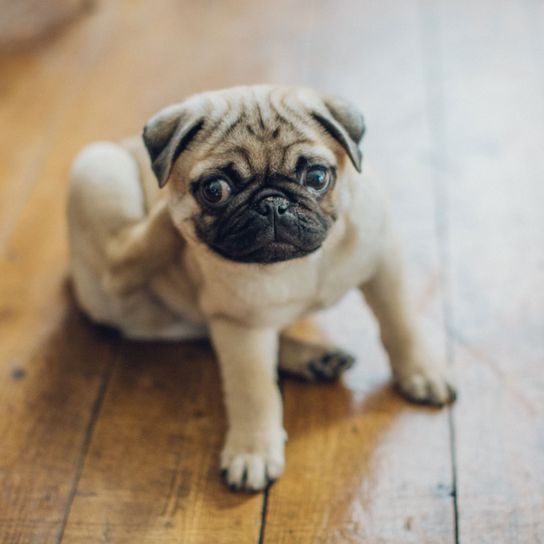
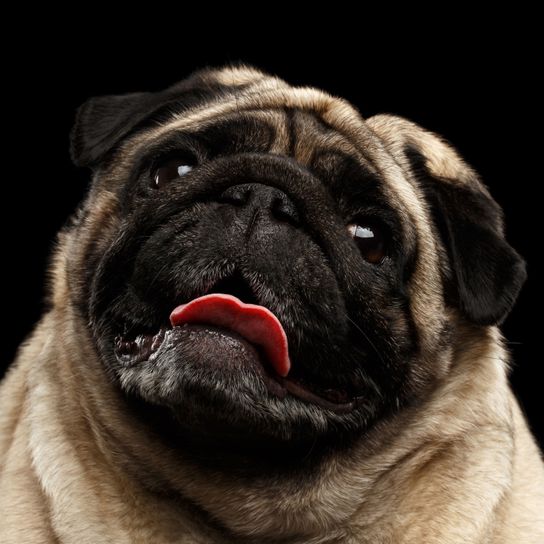
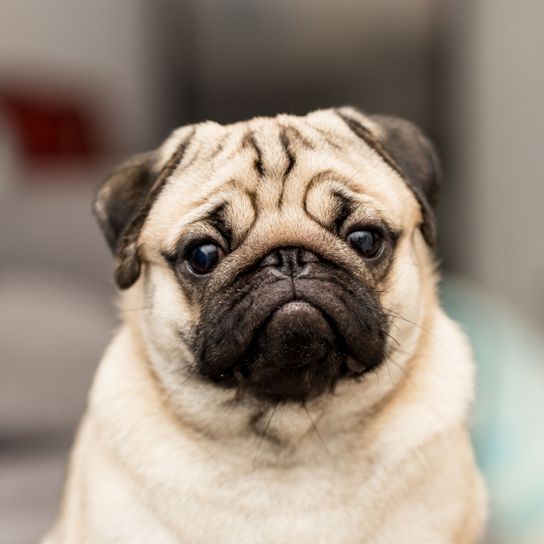
| Alternate Name | Pug |
| Origin | China |
| Life expectancy | 12 - 15 years |
| Care requirements | low-maintenance |
| Activity level | low |
| FCI group | Small Molossian type Dogs |
| AKC group | Toy Group |
| KC group | Toy Group |
Pug mixes
Attitude, character and temperament of the breed
Typical character traits of the Pug
The Pug is a little charmer who likes to wrap his master around his finger with his cute ways. Apart from that, Pugs are extremely intelligent and dignified. It is not for nothing that they used to be kept in noble houses. They are sensitive to the world and any change of mood is immediately noticeable to them. They tend to get megalomania from time to time if they are not well socialized. Nevertheless, they are peace-loving and can be kept well with other pets. However, they often have trouble judging certain situations correctly, which can put them in dangerous situations.
If you want to buy a pug, you should make sure that you also have enough time for the animal. The four-legged friends do not like it at all if they are not included in everyday activities. If a pug feels disadvantaged, he likes to draw attention to himself with various sounds or corresponding gestures. The education should already take place with the Pug puppy, in order to contain their self-will a little.
Usage
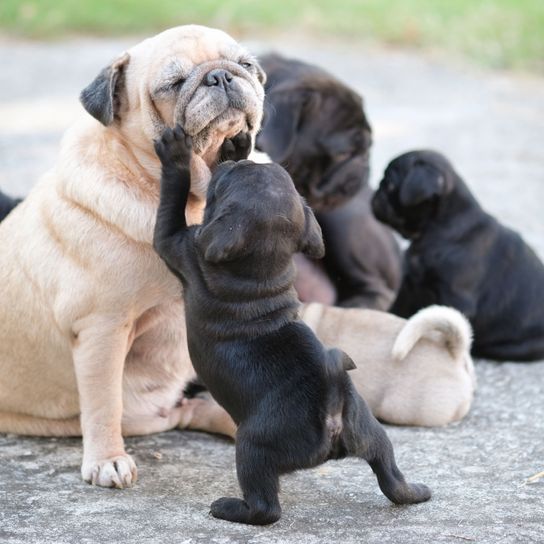
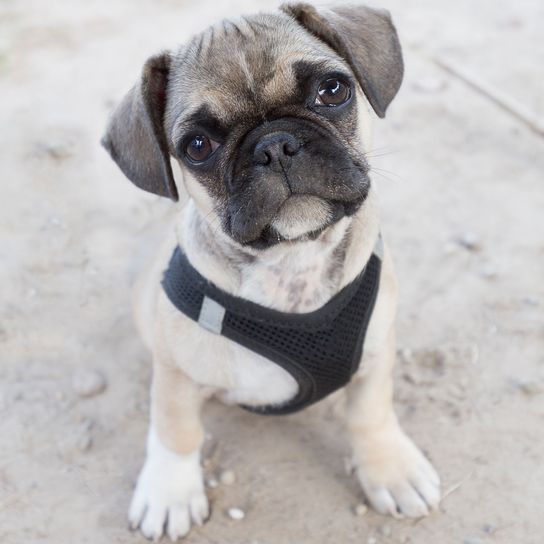
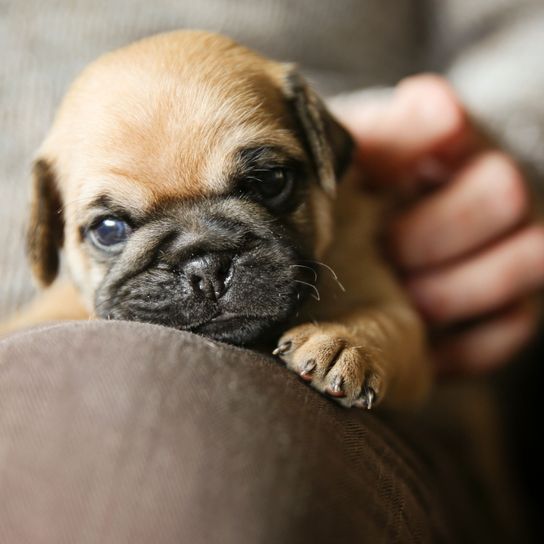
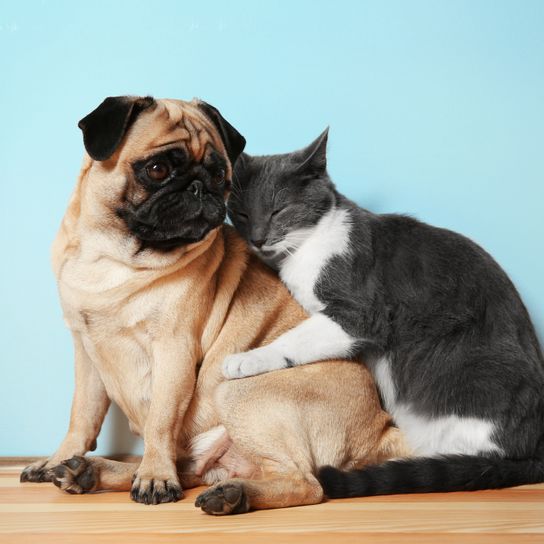
Diseases typical for the breed
The Pug is not particularly fit in terms of health. Especially the brachycephalic syndrome (BCS) causes many health diseases.
A typical civilization disease of the dog breed is overweight. If your dog moves too little and yet is fed a lot of energy, it can quickly happen that the animal brings a few kilograms too much on the scale. Thus, in the worst cases can bring to light cardiovascular diseases as well as diabetes mellitus. In addition, the excess weight in the small dog can quickly lead to an overload of the musculoskeletal system.
The dog's large eyes are also a weak point. If you don't clean your dog's eyes regularly, it can lead to corneal inflammation.
Other breed-related conditions include:
- Atopy
- Skin fold dermatitis
- Demodicosis
- Hereditary diseases
- Urinary stones
Life expectancy of the pug
How old a Pug will live depends basically on the type of husbandry as well as the diet. If your individual belongs to the more robust variety, however, he can even live up to 15 years.
Pug breeding and purchase
Breeding should always be done only according to the valid standards. Especially with the Pug, well opened nostrils are important. The animals already have a predisposition to respiratory diseases, which is why many breeders nowadays try to give the dog more "nose" again: so-called "Retromops" breeding. Also a corresponding size in breeding is required.
If you are interested in a pug, you should always buy it only from a reputable breeder. In most cases, you pay between 600 and 1200 euros. However, the money is worth it, because you can be sure that the animal is healthy and also no hereditary diseases are present. Before buying you should also inform yourself about the parents of the puppy.
If you want, you can also rescue a pug from a shelter. Many of these animals have been looking for a nice home for a long time.

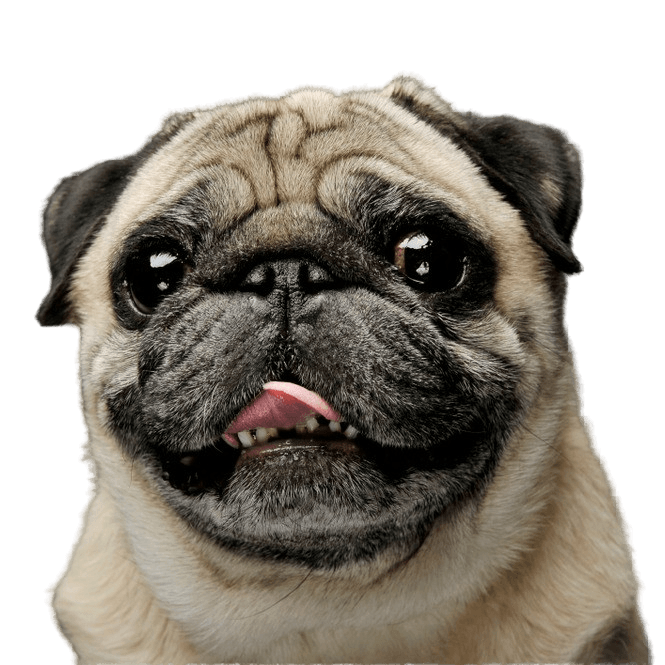
Breed characteristics of the Pug
The Pug is classified by the FCI in Group 9(Companionand companion dogs), Section 11(Small dog-like dogs). The breed standard does not require a working test.
There is no fixed size classification. However, the ideal weight is 6.3-8.1kg, with which it usually reaches a maximum of 35cm.
"Multum in Parvo"
The Pug is distinctly square and stocky, which is also oftencalled"Multum inParvo". Translated, this means something like "a lot of mass in a small space", which is expressed by compact,tightly squat proportions and firmness of the musculature. Especially the latter, however, must not be confused with fat in overweight. The dogmust, however, be neither low-set nor narrow and high-legged.
A slight rolling of the hindquarterstypifiesthemovement of this breed of dog. Breeding specimens must becapable of determined andevenmovement.
The head
The round head of this breed is rather large.The round head of this breed is rather large and in proportion to the body. The skull has no indentations, but there are clearly marked, not excessive wrinkles on the forehead.
The muzzle
The black nose is said to have ratherlargeandwide open nostrils tocounteract the typical shortness of breath. A compressednoseandsevere wrinklingon thebridgeofthe nosearetherefore unacceptableand are justifiably severely penalized at shows. The fang itself is fairlyshort, blunt, square but not upturned, and theeyes ornoseshouldnever beadverselyaffectedorobscuredby wrinkleson the bridge of the nose.
A Pug usually has a slight forward bite, typically a wide lower jaw with a row ofincisorsalmost in a straight line.
The eyes
The dark, relativelylargeeyes areround inshape with a gentle and troubled expression. They are very shiny and appear full of firewhen excited,yet theyarenot prominent,exaggerated ,or showing the sclera (white) whenlookingdirectlyahead. The breed standard also requires freedom from eye disease.
The ears
The Pug hasthin,small butsofte (like"blackvelvet") ears.Two ear postures are allowed:
- Rose ear-small, falling ear, which is folded to the side and back,making the pinna visible
- Button ear- ear inwhich the leather falls forward, the Ear tip is close to the skull, so thattheinside of the ear isnotvisible
. This shape ispreferred.
The trunk
The thick neck is slightly curved and carried proudly. This is especially evident in the crest-like area of the profile line. The body, on the other hand, appears short and stocky with a straight back, which does not give way, and a broad chest with continuing well arched ribs reaching far back.
The tail
Set high, the tail is socloseas possible over the hips. Double curled tails, however, as one likes to see in comics, are highly desirable.
The limbs
The Pug has a very sloping shoulder. The very strong forearm, however, is again straight and well placed under the body. The hind legs are also strong and well placed under the body.
Both the front and hind feet should be neither as long as a rabbit's foot, nor as round as acat's foot, but shouldhave wellspacedtoes . ThePug has black clawswhen bred .
The coat
The Pug has finesmooth and soft short hair, which shines.
It comes in thefollowing colors: silver, apricot, light fawn or black. These colors arepure in each caseto emphasizethecontrast ofcolor,eel line(black stripe running from occiput totail) and mask. The markings should be neatly defined.All the features mentioned (mask, ears, "naeri" on cheeks, forehead patch (diamond) and eel mark) are as black as possible.
| Fur length | short |
| Fur | flat coated |
| Ear shape | Tilt-ear |
| Tail | stubby |
| Anatomy | massive, square, hefty |
| Size ♀ | 22 - 25 cm |
| Weight ♀ | 6 - 8 kg |
| Size ♂ | 25 - 30 cm |
| Weight ♂ | 6 - 8 kg |
| Suitable For | Beginner, Children, Seniors |
Colors



Known Diseases
Hip dysplasia (HD)
Hip dysplasia (HD) is a genetic condition in dogs where the hip joint is not shaped properly. This leads to pain, stiffness and restricted movement.
Denture malocclusions
Malocclusions of the dentition often occur in dogs with short muzzles.
Shortness of breath
Difficult breathing can be recognized by the dog's rattling and sometimes accelerated breathing rate.
Overweight
Often, unfortunately, the dogs very much under excess weight. But the dogs themselves are never to blame!
Heart disease
Can occur frequently in dogs and can sometimes be treated with medication.
Breathing problems
Dogs with shortened muzzles can often experience respiratory problems.
FAQ
-
A pug costs about 1200 to 2000 euros. Retromops puppies cost about 1600 euros.
-
A pug can easily be kept in an apartment and is a cuddly companion.
-
No, there is only one breed called Retromops. They have longer legs and snouts for better breathing.
-
Pugs are considered docile fellows and have some great chaacter traits. They are considered smart.
-
Yes, the pug is a good family dog.
-
A Pug needs regular brushing to keep his coat in good condition and should also be bathed regularly. It is important to give him enough exercise to stay healthy.
-
A pug can be trained using positive reinforcement and clear commands. It is important to use short and fun training sessions to keep the dog interested.
-
Pugs are usually patient and friendly with children, but it is important that children learn how to interact with a dog to avoid injury or accidents.
-
No, Pugs are not usually suitable as guard dogs, as they tend to be friendly towards strangers and are not particularly noisy.
-
On average, a pug can live between 12 and 14 years.







